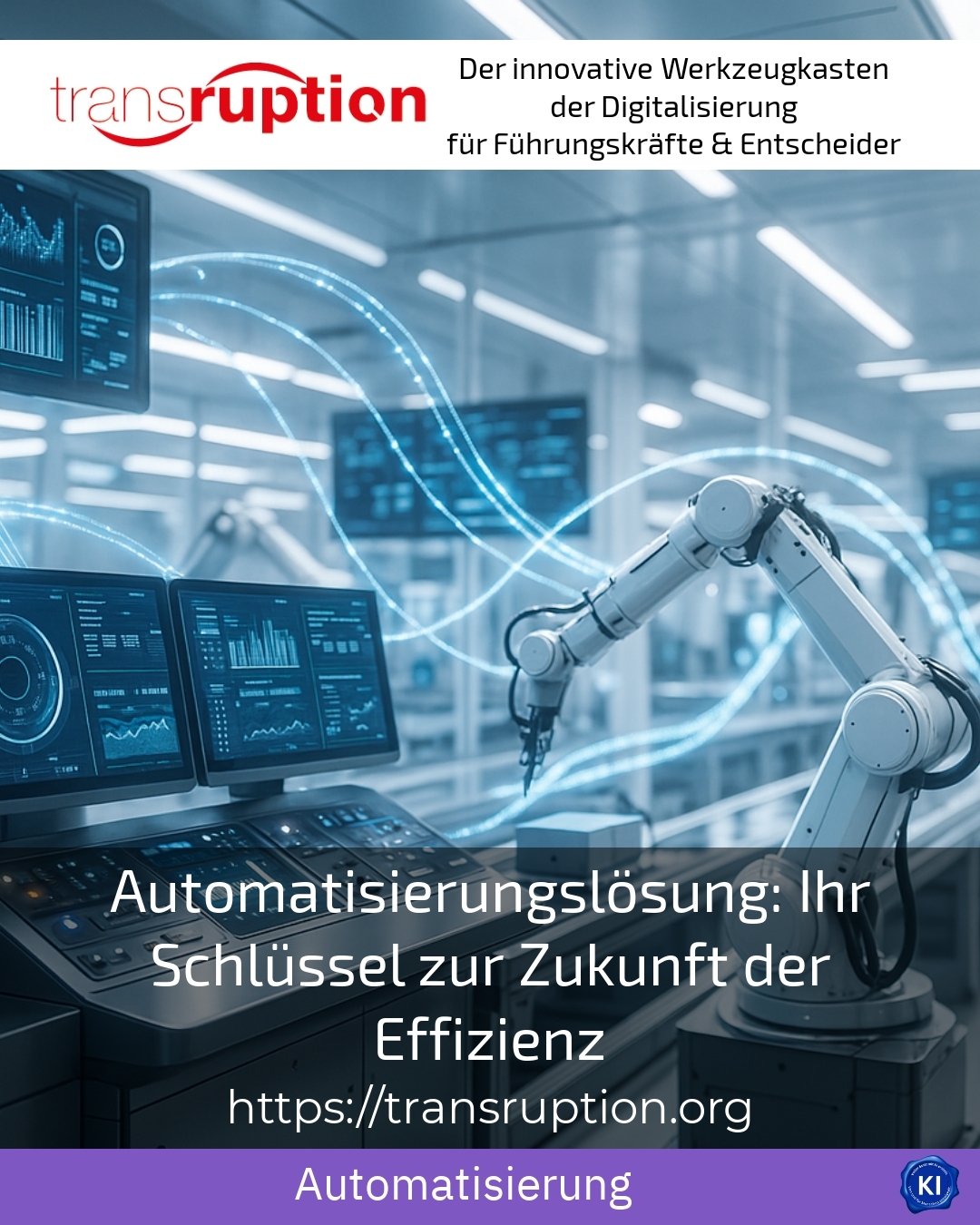Today, an **automation solution** is more than just a technical trend - it is the key to sustainably increasing efficiency in companies. Whether in production, IT or administrative processes: With the targeted integration of automated systems, workflows can be accelerated, error rates minimised and costs reduced. The automation solution supports companies in remaining competitive and adapting flexibly to changing requirements.
Automation solution: More efficiency through intelligent process design
Companies from a wide range of industries report positive effects from automation solutions. In the **manufacturing industry**, for example, robotic arms are taking over assembly work that previously required a lot of time and human resources. These robots work precisely and continuously, which improves product quality and increases production speed at the same time. A large car manufacturer was able to significantly reduce assembly times and minimise errors caused by manual input with an automation solution.
Automated test systems (ATE) are used in the **semiconductor sector**. These test systems enable fast and high-precision testing of components such as microprocessors or memory chips. This improves product quality and increases production efficiency at the same time. Companies in the semiconductor industry rely on such automation solutions to meet the high demands of their customers and reduce downtime due to faults.
Even in the **IT department**, automation solutions offer great advantages: Routine tasks such as resetting passwords or creating user accounts can be completed quickly and reliably using software robots. This reduces the workload of IT employees and increases the overall productivity of the department. At the same time, automation ensures fewer errors and quick processing, which in turn has a positive effect on user satisfaction.
Practical examples of the use of automation solutions
Interestingly, companies use automation solutions in very different ways, which emphasises the wide range of possible applications:
- A food production company implemented an automation solution in which packaging robots work faster and more error-free than manual packaging teams. This enabled production to be increased while maintaining the same level of quality.
- In the pharmaceutical industry, mobile transport robots took over the internal transport of pallets. This improves both safety and efficiency in shift operations.
- A medium-sized mechanical engineering company relies on digital files with automated document control that link SAP data, among other things. This allows production processes to be coordinated more quickly and errors to be reduced.
BEST PRACTICE at the customer (name hidden due to NDA contract) An automation solution was introduced in a production plant that records and analyses process data in real time. This enabled bottlenecks to be recognised and mitigated at an early stage, shortening delivery times and ensuring product quality at the same time. This led to a measurable increase in customer satisfaction.
Automation solution paves the way for flexibility and cost savings
Modern automation solutions are characterised by a high degree of adaptability. Companies that need to react flexibly to market changes benefit from scalable systems that can be quickly reprogrammed or expanded. For example, an automated production line in electronics manufacturing enables rapid changeover to new component variants. This allows manufacturers to realise a wide variety of products without long changeover times, thereby increasing their market opportunities.
Reducing labour costs also plays an important role. Automation solutions enable companies to carry out work steps more efficiently with less manual intervention. This not only cuts labour costs, but also significantly reduces the susceptibility to errors. At the same time, automated processes increase safety by allowing machines to take over strenuous or dangerous tasks.
Automation solutions are also growing rapidly in the logistics sector. By using autonomous mobile robots, warehouse processes can be accelerated, inventories can be carried out more accurately and order picking can be optimised. The result is greater delivery accuracy and improved resource utilisation - important factors for success in highly competitive markets.
How an automation solution supports projects
Many companies turn to specialised coaches and consultants when faced with the challenges of planning and implementing an automation solution. These accompany the projects because they provide impetus and develop the right strategies for the individual company situation. Clients often report uncertainties when selecting suitable technologies or integrating new systems into existing processes.
Professional support is also provided during the change management phase. This includes involving employees in the changeover so that fears are allayed and the new working methods are accepted. This ensures a smooth transition and allows the automation solution to take full effect.
My analysis
The automation solution plays a central role if companies want to sustainably improve their efficiency. It helps to make processes not only faster and more cost-effective, but also safer and of higher quality. Whether in industry, IT or logistics, companies that implement a suitable automation solution are better prepared for change and more competitive. It has also been shown that an accompanying consultation significantly supports the success of the project and acceptance among employees. The automation solution is therefore an important building block for the future of the corporate world.
Further links from the text above:
Automation solutions: Types, advantages, examples
3 common automation solutions in the semiconductor industry
Automation in industry - application examples
Automation explained - definition, examples and advantages
Automation in industry: what are the advantages and disadvantages?
For more information and if you have any questions, please contact Contact us or read more blog posts on the topic TRANSRUPTION here.
















